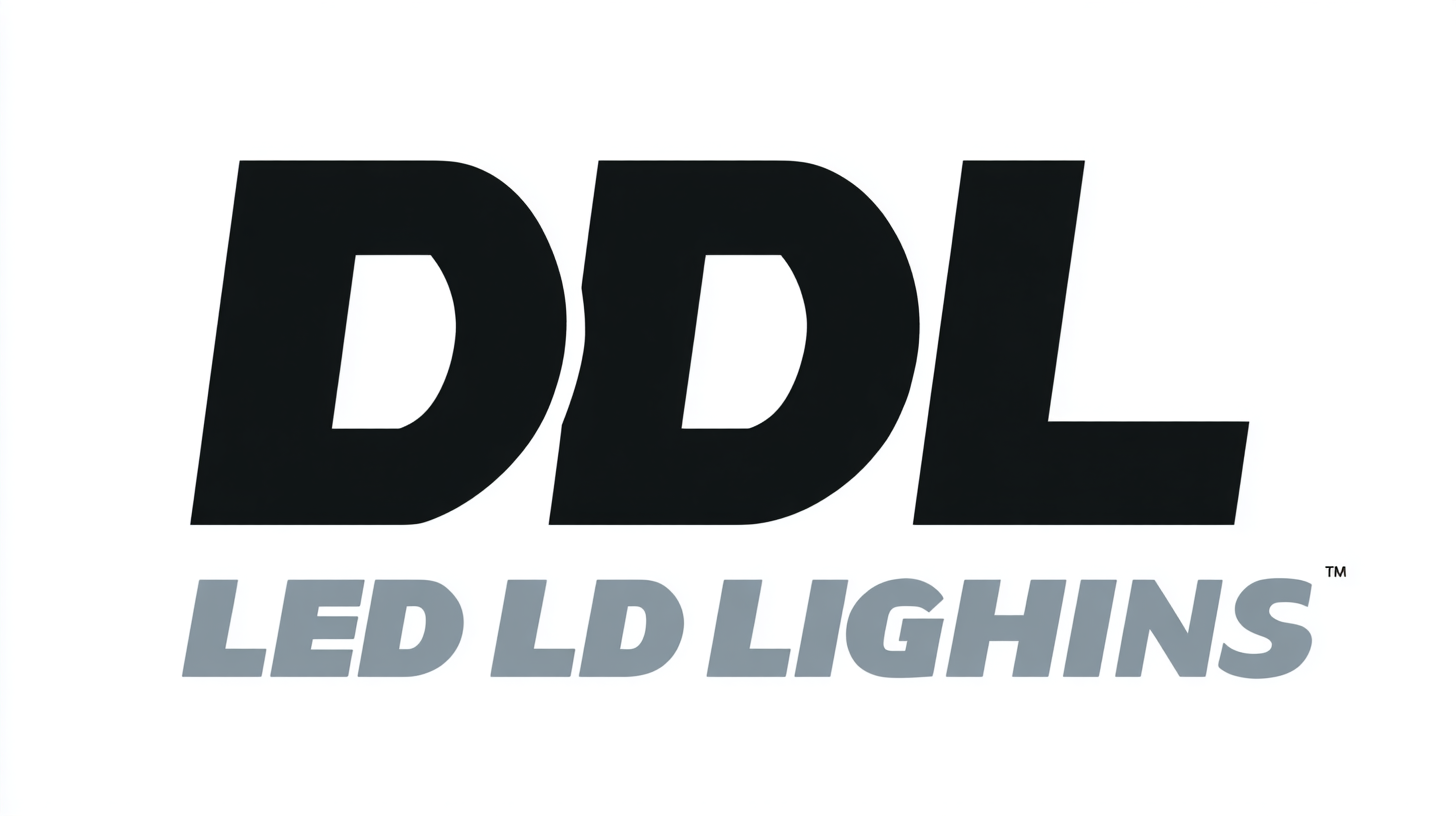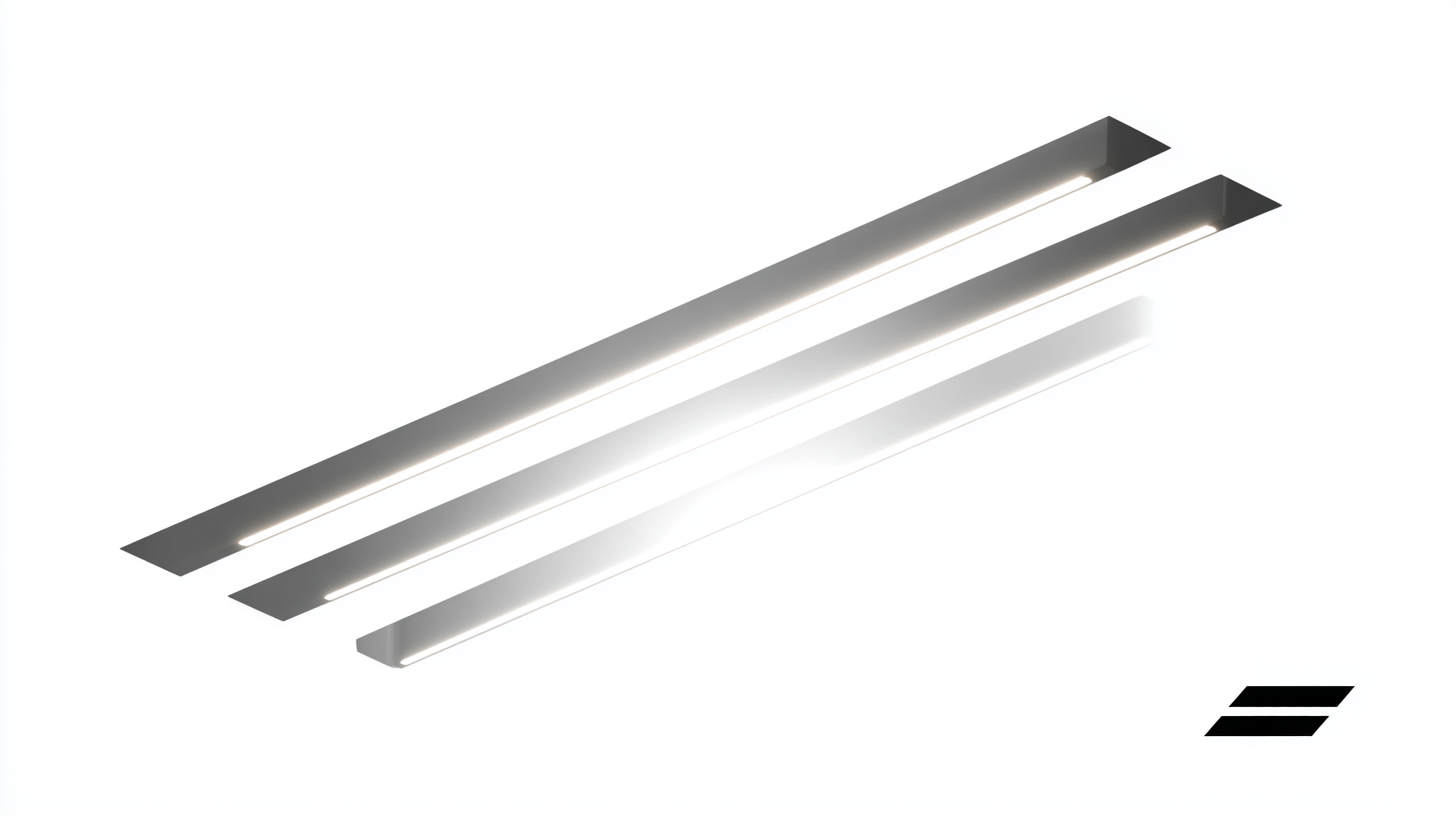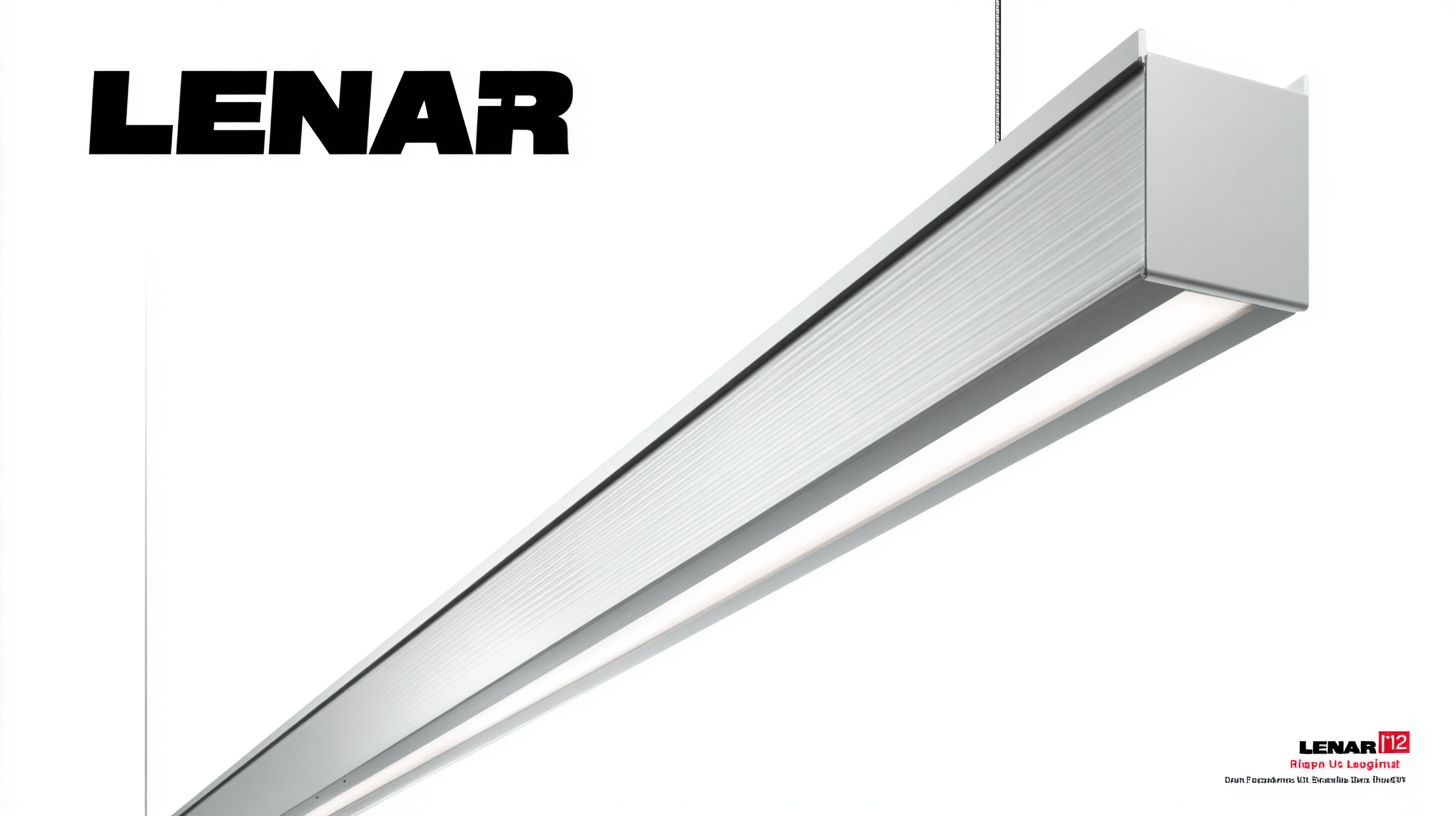2025 Best Linear Led Lighting Trends Driven by 40 Percent Energy Efficiency Improvement
As we look ahead to 2025, the evolution of linear LED lighting emerges as a pivotal trend in the pursuit of energy efficiency, with recent studies indicating a remarkable 40 percent improvement in energy consumption compared to traditional lighting solutions. According to the U.S. Department of Energy, LED lighting, including linear LED options, is expected to represent over 60% of the total lighting market by 2025, driven by advancements in technology and growing regulatory support for sustainable practices. These innovations not only contribute to significant cost savings for consumers but also play a vital role in reducing greenhouse gas emissions. As businesses and homeowners alike shift towards energy-efficient solutions, understanding the benefits of linear LED lighting becomes essential in navigating this transformative landscape. With its sleek design and versatile applications, linear LED lighting is poised to redefine our spaces while promoting a greener future.

Key Features of 2025 Linear LED Lighting Revolution
The emergence of linear LED lighting is poised for a significant transformation in 2025, driven largely by advancements that promise a remarkable 40 percent improvement in energy efficiency. One of the key features of this revolution is the integration of smart technology. Modern linear LED systems will increasingly incorporate sensors and IoT capabilities, allowing for real-time adjustments in brightness and energy consumption based on environmental conditions and occupancy. This not only enhances user comfort but also optimizes energy usage, making these systems more sustainable than ever.

Another notable aspect of the 2025 linear LED lighting landscape is the emphasis on versatility in design. Manufacturers are focusing on creating sleek, minimalist profiles that can blend seamlessly into various architectural styles while providing functional lighting solutions. Customizable color temperatures and tunable white options are expected to become standard, allowing end-users to tailor lighting to specific moods and tasks. Additionally, advancements in materials will lead to more durable, lightweight solutions that enhance installation flexibility, paving the way for innovative applications in both residential and commercial spaces.
Innovative Designs for Enhanced Aesthetics and Functionality
As we move closer to 2025, the trends in
linear LED lighting are leaning towards innovative designs that not only improve energy efficiency but also enhance aesthetics and functionality. The latest advancements in technology allow for sleek, minimalist designs that blend seamlessly with various interior styles.
Whether it's for residential or commercial spaces, incorporating linear LED lighting can create a modern and inviting atmosphere.
Tip: Consider using adjustable linear lighting fixtures to accentuate architectural features in your space. These fixtures can be customized in terms of length and brightness, providing versatility while highlighting key areas.
Moreover, manufacturers are now focusing on sustainable materials and smart lighting solutions that adapt to user preferences.
The integration of smart technology into linear LED designs offers functionalities such as color temperature adjustment and scheduling capabilities, which enhance both comfort and energy savings.
Tip: Explore warm white or color-changing LEDs to create different moods throughout the day. These options not only enrich the ambiance but also serve to enhance the functionality of the space by catering to various activities, from work to relaxation.
Top Energy Efficiency Technologies Transforming Lighting Solutions
The lighting industry is undergoing a transformative shift, significantly driven by advancements in energy efficiency technologies. According to the U.S. Department of Energy, LED lighting has improved energy efficiency by over 40% compared to traditional incandescent bulbs, resulting in major cost savings and reduced environmental impact. This leap forward not only meets the increasing demand for sustainable solutions but also aligns with global initiatives aimed at reducing carbon footprints. By 2025, we expect that innovations in linear LED lighting will revolutionize the market, making energy-efficient options more accessible to both commercial and residential users.
One of the most promising technologies is smart lighting systems, which employ sensors and IoT connectivity to optimize energy usage. Research by Navigant Consulting indicates that the adoption of smart lighting solutions is projected to grow by over 50% in the next five years. These systems allow for real-time adjustments, significantly lowering energy consumption during off-peak hours. Furthermore, advancements in tunable white light technology are enabling spaces to adapt their lighting quality dynamically, promoting well-being while minimizing energy waste. As these technologies proliferate, end-users will not only enjoy enhanced lighting experiences but also contribute to a more sustainable future.
2025 Best Linear Led Lighting Trends: Energy Efficiency Improvement
This chart illustrates the projected energy efficiency improvements of linear LED lighting technologies from 2023 to 2025. The data shows a significant increase in energy efficiency, attributed to advancements in lighting solutions.
Smart Lighting Systems: Integration with IoT for Optimal Performance
The emergence of smart lighting systems is revolutionizing the way we utilize linear LED lighting. By integrating Internet of Things (IoT) technology, these systems enable users to control their lighting remotely and optimize energy usage. With features such as automated dimming, scheduling, and occupancy sensors, smart lighting not only enhances user convenience but also significantly contributes to energy efficiency. As a result, users can expect an impressive improvement of up to 40 percent in energy savings, aligning perfectly with the growing demand for sustainable solutions.
Moreover, the integration of IoT in lighting systems fosters seamless communication between devices, creating opportunities for advanced analytics and real-time monitoring. This allows for proactive maintenance, reducing downtime and extending the lifespan of lighting installations. Smart lighting can adapt to environmental conditions, adjusting brightness based on natural light availability, thereby maximizing efficiency. As we move closer to 2025, the trend towards smart lighting will continue to gain momentum, showcasing how technology not only illuminates our spaces but also enhances the overall quality of life.
2025 Best Linear Led Lighting Trends Driven by 40 Percent Energy Efficiency Improvement
| Trend | Energy Efficiency Improvement (%) | Integration with IoT | Applications | Expected Market Growth (%) |
|---|---|---|---|---|
| Smart Controls | 40 | Yes | Commercial Spaces | 25 |
| Adaptive Lighting | 42 | Yes | Urban Areas | 30 |
| Human-Centric Lighting | 38 | Yes | Healthcare Facilities | 28 |
| Sustainable Materials | 41 | Yes | Residential Buildings | 22 |
| Dynamic Color Changing | 39 | Yes | Retail Spaces | 27 |
Sustainable Materials and Practices in Linear LED Manufacturing
As the demand for energy-efficient lighting solutions grows, the linear LED market is seeing significant advancements driven by sustainable materials and manufacturing practices. The integration of eco-friendly materials not only reduces the carbon footprint of production but also enhances the longevity and efficiency of the products. Manufacturers are increasingly opting for recycled plastics and bio-based materials, which not only support sustainability but also lessen the environmental impact associated with traditional manufacturing processes.
Moreover, the adoption of circular economy principles in linear LED manufacturing is gaining momentum. This approach emphasizes the importance of designing products for reuse and recyclability, ensuring that components can be repurposed at the end of their life cycle. By prioritizing sustainable practices, companies are not only meeting consumer demands for greener solutions but also contributing to a more sustainable future. The trend towards energy-efficient linear lighting is set to redefine industrial standards, ultimately leading us towards an environmentally conscious lighting landscape.

